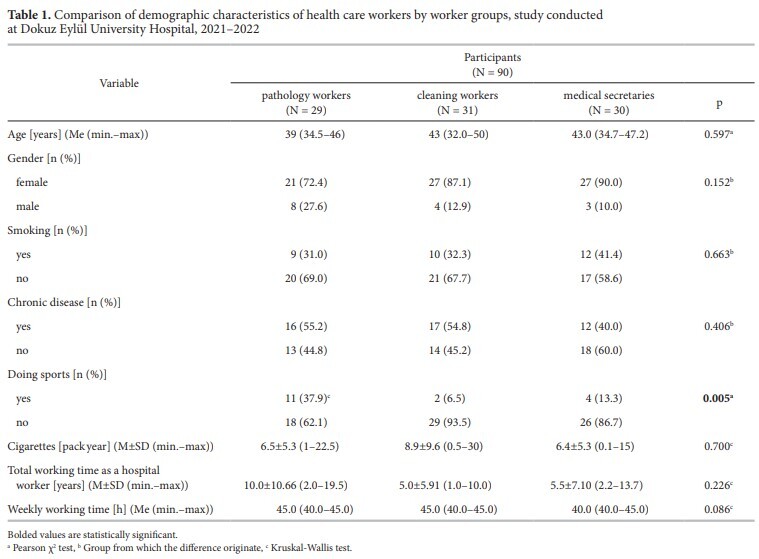Online first
Current issue
Archive
Most cited in 2024
About the Journal
Editorial Office
Editorial Board
Copyright and self-archiving policy
Information clause on the processing of personal data
Declaration of accessibility
Instructions for Authors
Instructions for Reviewers
Contact
Reviewers
2024
2023
2022
2020
2021
2019
2018
2017
2016
2015
2014
2013
Editing and translations
ORIGINAL PAPER
Chemical risk assessment in hospital settings: A comparison of workers' perceptions, expert opinions, and occupational hygiene measurements
1
Dokuz Eylül University, Izmir, Turkey (Department of Occupational Medicine, Faculty of Medicine)
2
Dokuz Eylül University, Izmir, Turkey (Department of Molecular Medicine, Institute of Health Sciences)
3
Gazi University, Ankara, Turkey (Department of Toxicology, Faculty of Pharmacy)
Online publication date: 2023-07-24
Corresponding author
Ayşe Coşkun Beyan
Dokuz Eylül University, Department of Occupational Medicine, Faculty of Medicine, 15 Temmuz Sağlık Sanat Yerleşkesi İnciraltı, 35340-Izmir, Turkey
Dokuz Eylül University, Department of Occupational Medicine, Faculty of Medicine, 15 Temmuz Sağlık Sanat Yerleşkesi İnciraltı, 35340-Izmir, Turkey
Med Pr Work Health Saf. 2023;74(4):241-50
KEYWORDS
occupational exposurerisk perceptionchemical riskquantitative assessmenthealth care workersoccupational hygiene measurement
TOPICS
ABSTRACT
Background: Harmful chemicals are used in various forms from different sources in hospital settings. The standard gold method in risk control studies still determines exposure by personal or ambient measurements. In the absence of trained personnel, resources, or sufficient time, qualitative methods should be used to assess exposure. This study aims to compare quantitative and qualitative results of chemical risk exposure. Material and Methods: Both qualitative (perceptions without monitoring data of the workers and experts) and quantitative perceptions (perceptions with monitoring data) were recorded. Two experts were asked to evaluate exposure intensity in pathology department workers, secretary workers, and cleaning workers. Occupational hygiene measurements were taken based on the occupational health and safety department risk assessment results, expert job analysis, and pilot study measurements. Results: While most workers reported feeling highly exposed to chemical risks, the majority of experts reported medium-risk exposures and high-risk exposures. Three occupational hygiene measurements (6.6%) exceeded the permissible time-weighted average, and the other results were within the acceptable range. Conclusions: There was a significant difference between the estimated exposure and the measured exposure in hospital settings. A correlation was not found between workers’ perceptions of chemical risk exposure and the chemical risk levels measured in this study. Med Pr Work Health Saf. 2023;74(4):241–50.
We process personal data collected when visiting the website. The function of obtaining information about users and their behavior is carried out by voluntarily entered information in forms and saving cookies in end devices. Data, including cookies, are used to provide services, improve the user experience and to analyze the traffic in accordance with the Privacy policy. Data are also collected and processed by Google Analytics tool (more).
You can change cookies settings in your browser. Restricted use of cookies in the browser configuration may affect some functionalities of the website.
You can change cookies settings in your browser. Restricted use of cookies in the browser configuration may affect some functionalities of the website.






